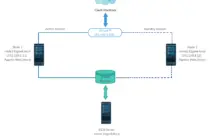How To Install Cacti on Ubuntu 20.04
Cacti is a free and open-source network monitoring and graphic tool written in PHP. It is designed as the front-end application for the Round-Robin database tool (RRDtool). It is used to get CPU load and network bandwidth utilization in a graph format.
In general, Cacti is used to get network bandwidth utilization and monitor the network traffic of a router or switch by polling over the SNMP protocol.
Here, we will see how to install Cacti on Ubuntu 20.04.
Install Cacti On Ubuntu 20.04
Cacti run on top of Apache, MySQL/MariaDB, and PHP. So, we will install them one by one.
Prerequisites
Update the repository index using the apt command.
sudo apt update
Install Apache & PHP
First, install the Apache webserver.
sudo apt install -y apache2 php-mysql libapache2-mod-php
Install PHP Extensions
Additionally, install a few PHP modules for the proper functioning of Cacti.
sudo apt install -y sphp-xml php-ldap php-mbstring php-gd php-gmp
Install MariaDB
Install the MariaDB (v10.3) from the Ubuntu repository.
READ: How To Install MariaDB v10.04 On Ubuntu 20.04
sudo apt install -y mariadb-server mariadb-client
After the MariaDB installation, run the mysql_secure_installation command to secure the MariaDB instance.
Install SNMP
Also, install the SNMP and RRDtool to monitor the devices.
sudo apt install -y snmp php-snmp rrdtool librrds-perl
Database Tuning
Cacti recommend changing the MariaDB server settings for better performance. So, edit the configuration file.
sudo nano /etc/mysql/mariadb.conf.d/50-server.cnf
Add/Update the below settings in the [mysqld] section of the file.
collation-server = utf8mb4_unicode_ci
max_heap_table_size = 128M
tmp_table_size = 64M
join_buffer_size = 64M
innodb_file_format = Barracuda
innodb_large_prefix = 1
innodb_buffer_pool_size = 512M
innodb_flush_log_at_timeout = 3
innodb_read_io_threads = 32
innodb_write_io_threads = 16
innodb_io_capacity = 5000
innodb_io_capacity_max = 10000
Restart the MariaDB service post the configuration change.
sudo systemctl restart mariadb
PHP Configuration
We need to set the timezone, memory limit, and execution time in the PHP configuration file for the Cacti installation. So, edit the php.ini file depending on your PHP version.
sudo nano /etc/php/7.4/apache2/php.ini
AND
sudo nano /etc/php/7.4/cli/php.ini
Update your timezone, as shown below.
date.timezone = US/Central
memory_limit = 512M
max_execution_time = 60
Create Database
Log in to the database server.
You can log in to the MariaDB server without entering MySQL root password by running sudo mysql -u root -p or mysql -u root -p command as root in Ubuntu 20.04.
sudo mysql -u root -p
Now, create a database for the Cacti installation.
create database cacti;
Create a database user and grant permission to the newly created database.
GRANT ALL ON cacti.* TO cactiuser@localhost IDENTIFIED BY 'cactipassword';
flush privileges;
exit
The newly created user (cactiuser) should have access to the mysql.time_zone_name table. So, we will import the mysql_test_data_timezone.sql to mysql database first.
sudo mysql -u root -p mysql < /usr/share/mysql/mysql_test_data_timezone.sql
Then, log in to MySQL.
sudo mysql -u root -p
Grant the permission to cactiuser.
GRANT SELECT ON mysql.time_zone_name TO cactiuser@localhost;
flush privileges;
exit
Download & Configure Cacti
Download the latest version of the Cacti using the wget command.
wget https://www.cacti.net/downloads/cacti-latest.tar.gz
Extract the Cacti archive using the tar command and move the extracted files to /opt directory.
tar -zxvf cacti-latest.tar.gz
sudo mv cacti-1* /opt/cacti
Import the default Cacti database data to the newly created cacti database.
sudo mysql -u root -p cacti < /opt/cacti/cacti.sql
Edit the Cacti configuration file to specify the database type, database name, hostname, user, and password information.
sudo nano /opt/cacti/include/config.php
Make the changes accordingly.
/* make sure these values reflect your actual database/host/user/password */ $database_type = "mysql"; $database_default = "cacti"; $database_hostname = "localhost"; $database_username = "cactiuser"; $database_password = "cactipassword"; $database_port = "3306"; $database_ssl = false;
Create a crontab file to schedule the polling job.
sudo nano /etc/cron.d/cacti
Add the following scheduler entry in the crontab so that Cacti can poll every five minutes.
*/5 * * * * www-data php /opt/cacti/poller.php > /dev/null 2>&1
Create a new site for the Cacti tool.
sudo nano /etc/apache2/sites-available/cacti.conf
Use the following configuration.
Alias /cacti /opt/cacti
<Directory /opt/cacti>
Options +FollowSymLinks
AllowOverride None
<IfVersion >= 2.3>
Require all granted
</IfVersion>
<IfVersion < 2.3>
Order Allow,Deny
Allow from all
</IfVersion>
AddType application/x-httpd-php .php
<IfModule mod_php.c>
php_flag magic_quotes_gpc Off
php_flag short_open_tag On
php_flag register_globals Off
php_flag register_argc_argv On
php_flag track_vars On
# this setting is necessary for some locales
php_value mbstring.func_overload 0
php_value include_path .
</IfModule>
DirectoryIndex index.php
</Directory>
Enable the created site.
sudo a2ensite cacti
Restart Apache services.
sudo systemctl restart apache2
Create a log file for Cacti and allow the Apache user (www-data) to write a data on to Cacti directory.
sudo touch /opt/cacti/log/cacti.log
sudo chown -R www-data:www-data /opt/cacti/
Setup Cacti
Visit the below URL to begin the installation of Cacti.
Login to Cacti installation wizard to set up Cacti installation.
Username: admin
Password: admin
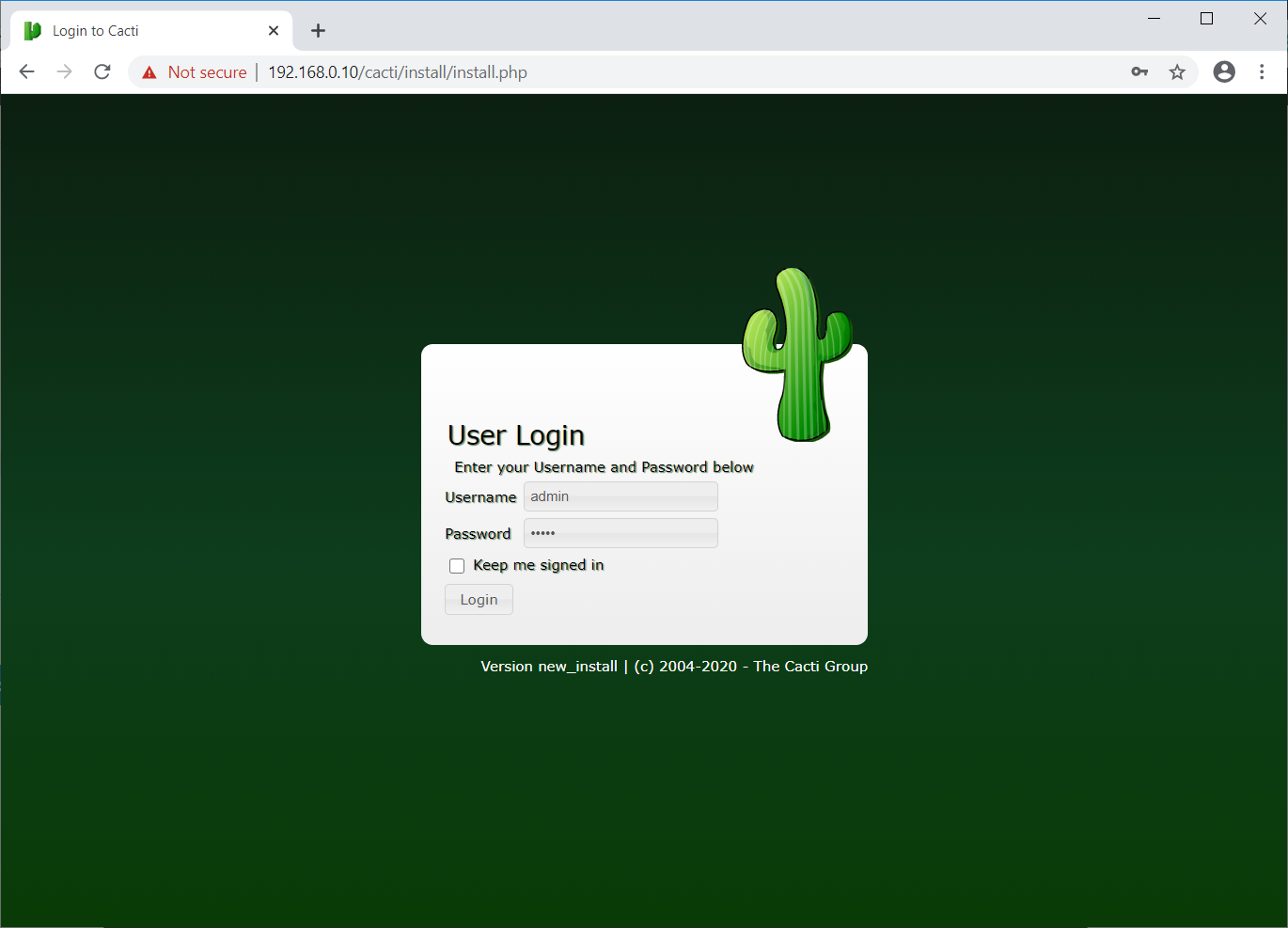
You must change the password of the Cacti admin user before you begin to set up Cacti.
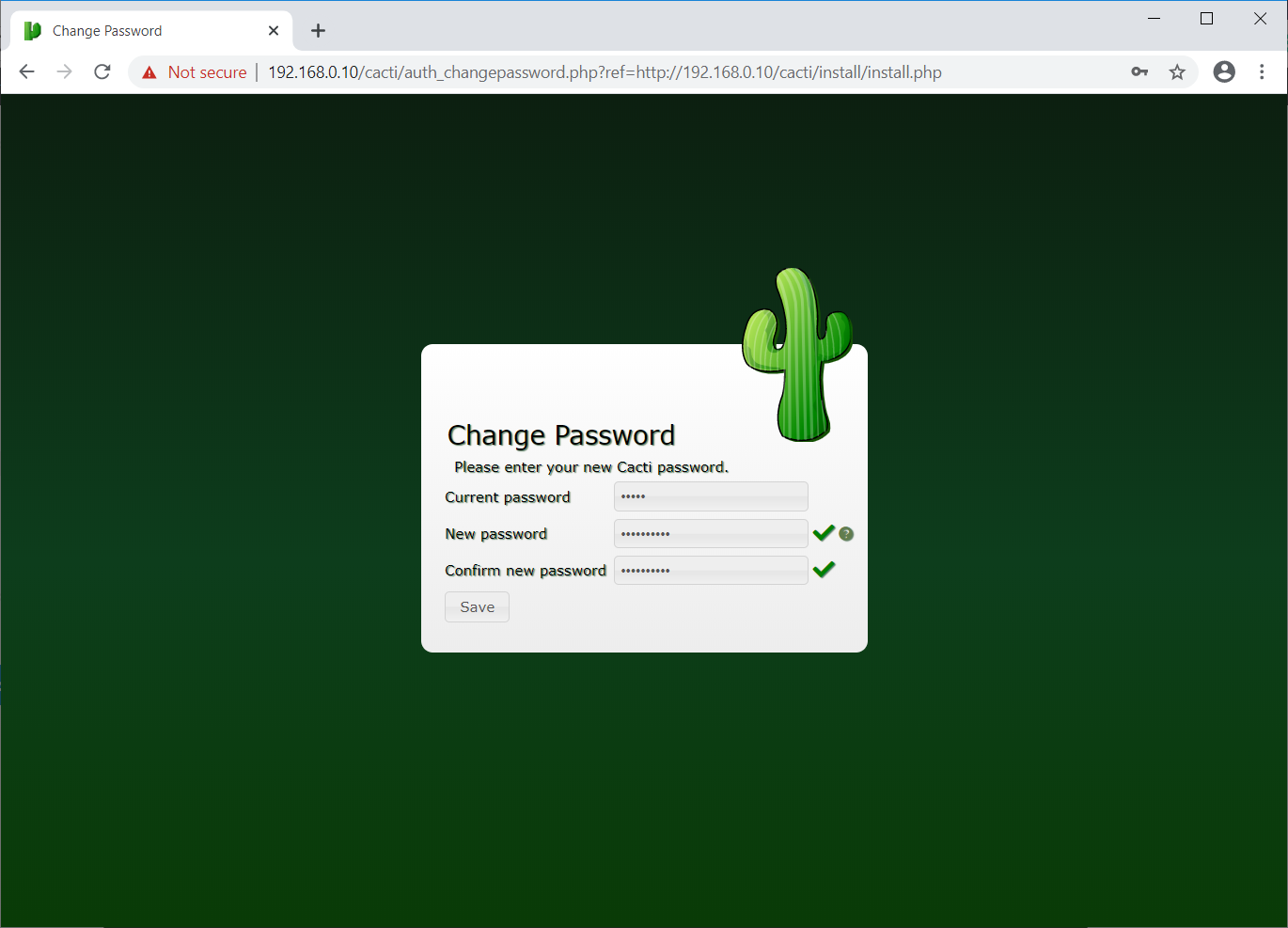
Read and Accept the Cacti license agreement and click on Begin to continue.
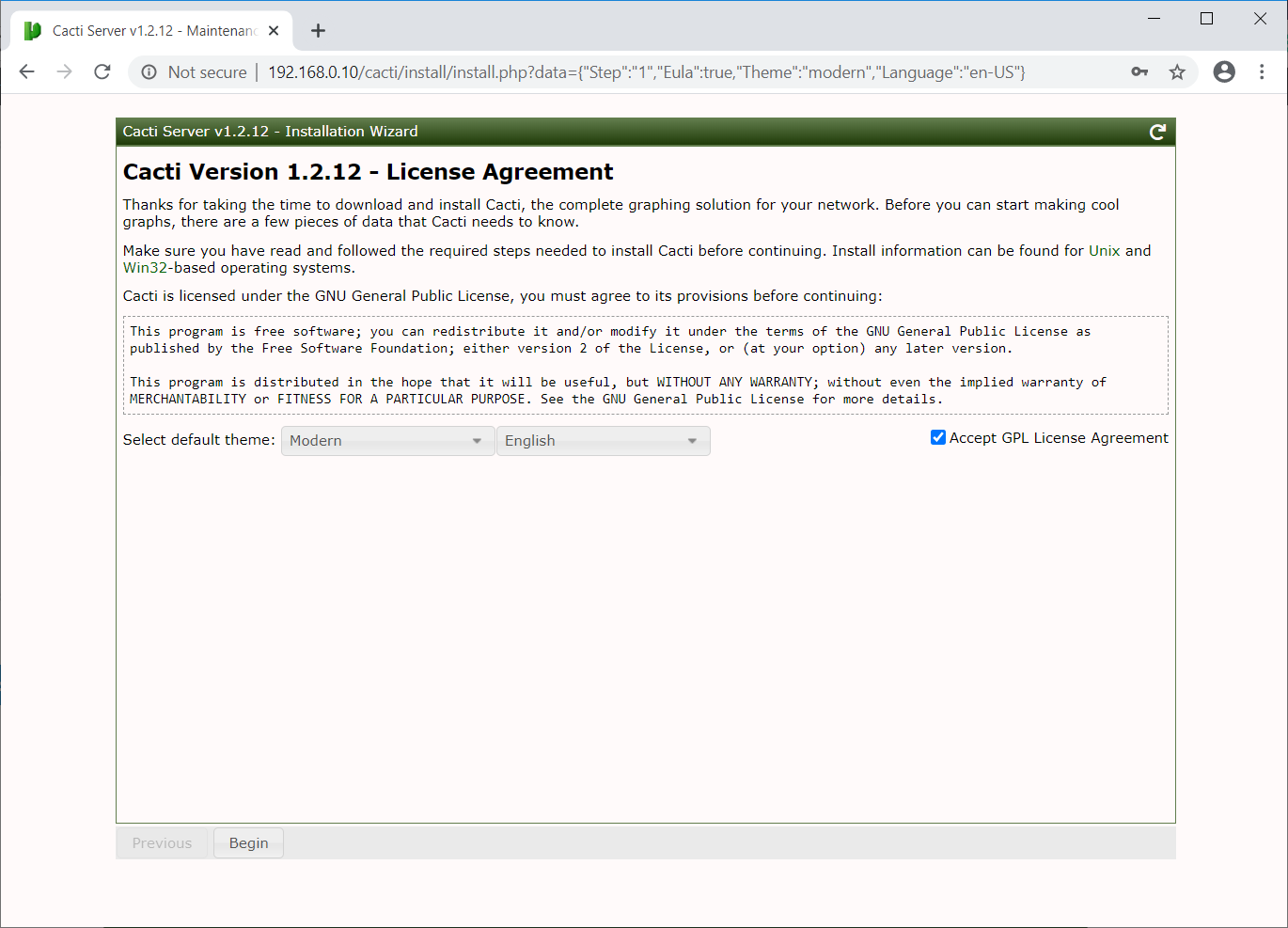
Cacti perform pre-installation checks and report issues on this page. You need to fix the problems before you go to the next step. Sometimes, you can ignore warnings.
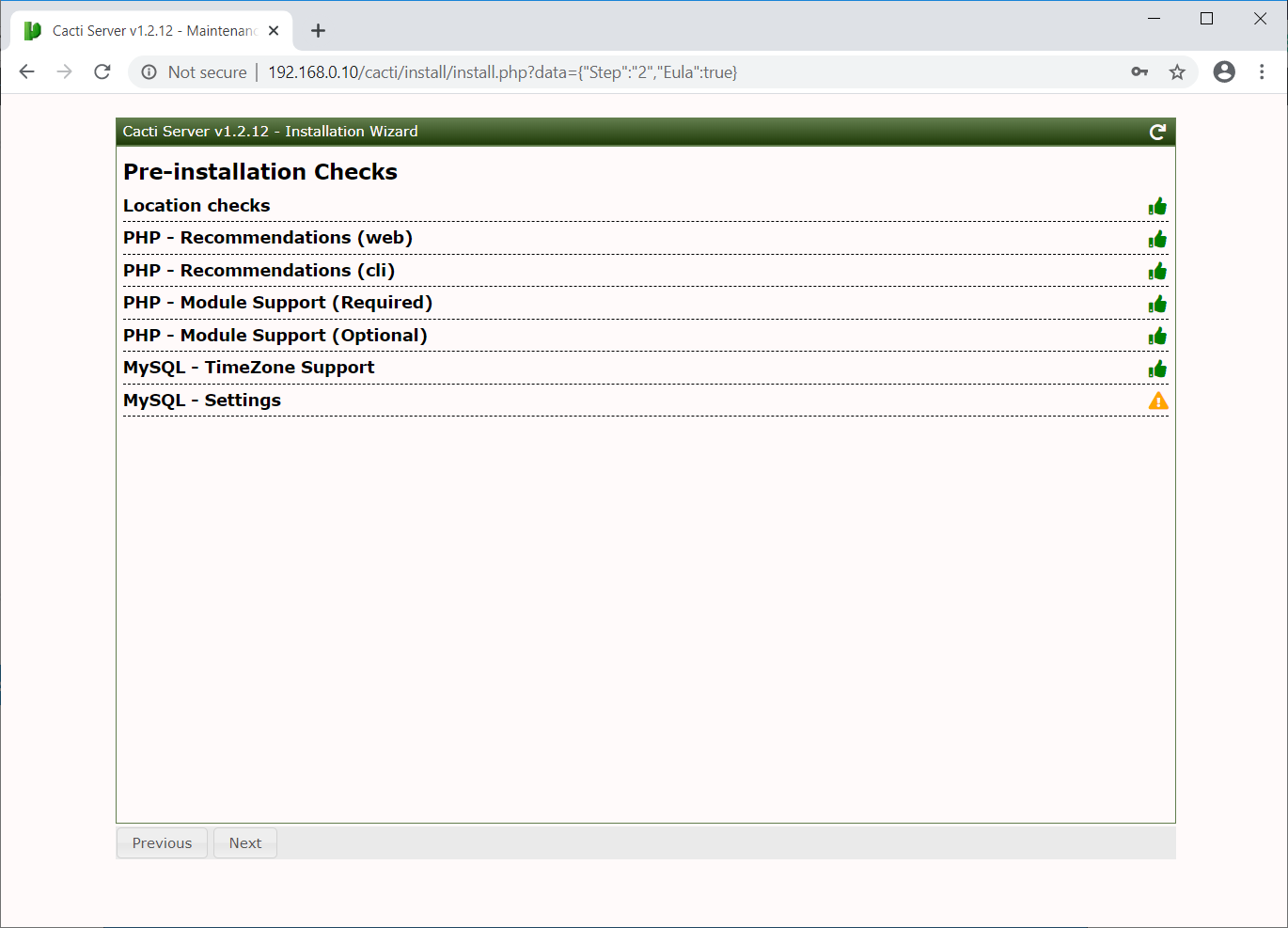
Select New Primary Server as an installation type for our installation and validate the database connection information and then click Next.
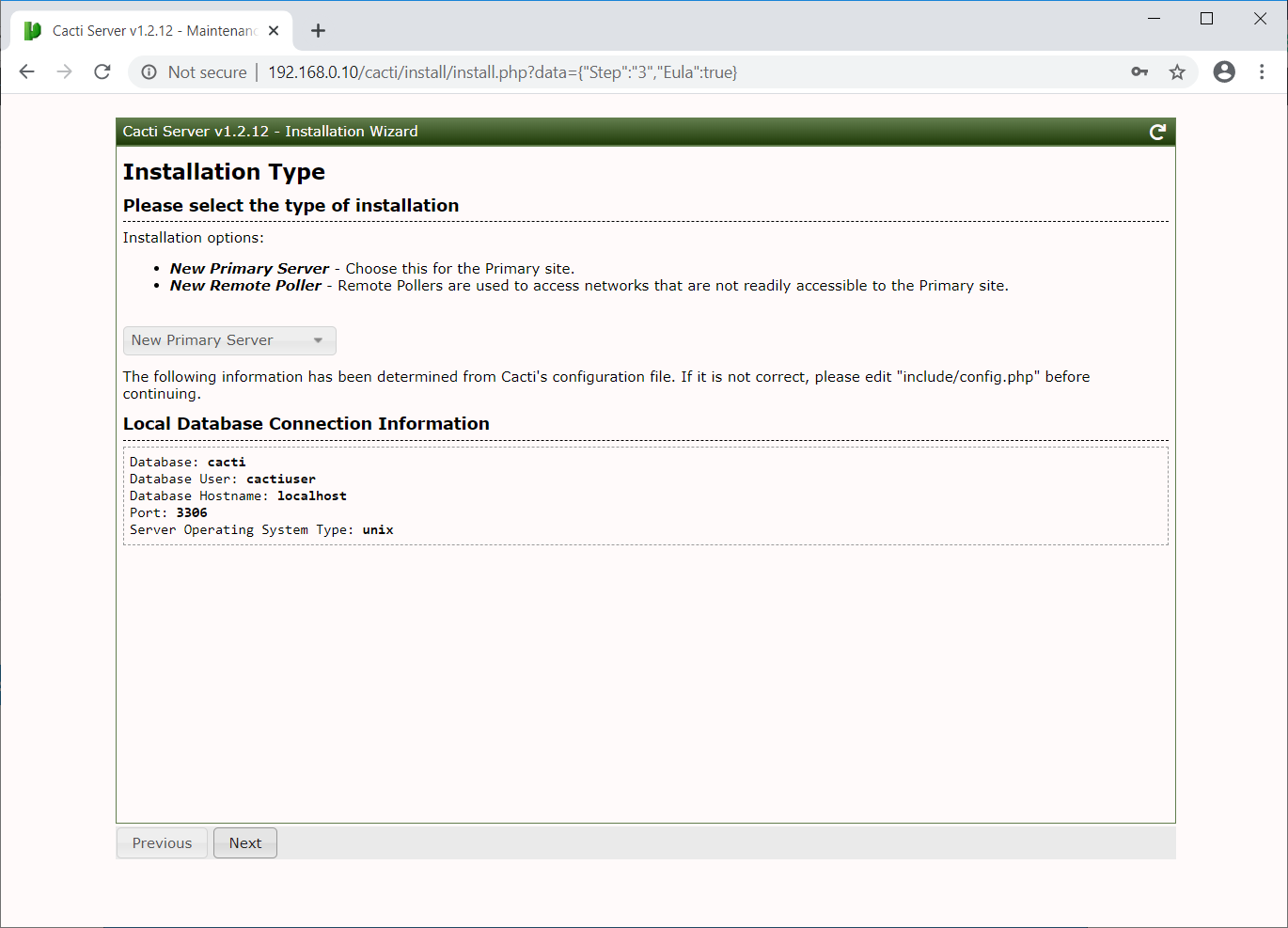
Now, Cacti installation wizard checks for permission problems you may have in the Cacti directories.
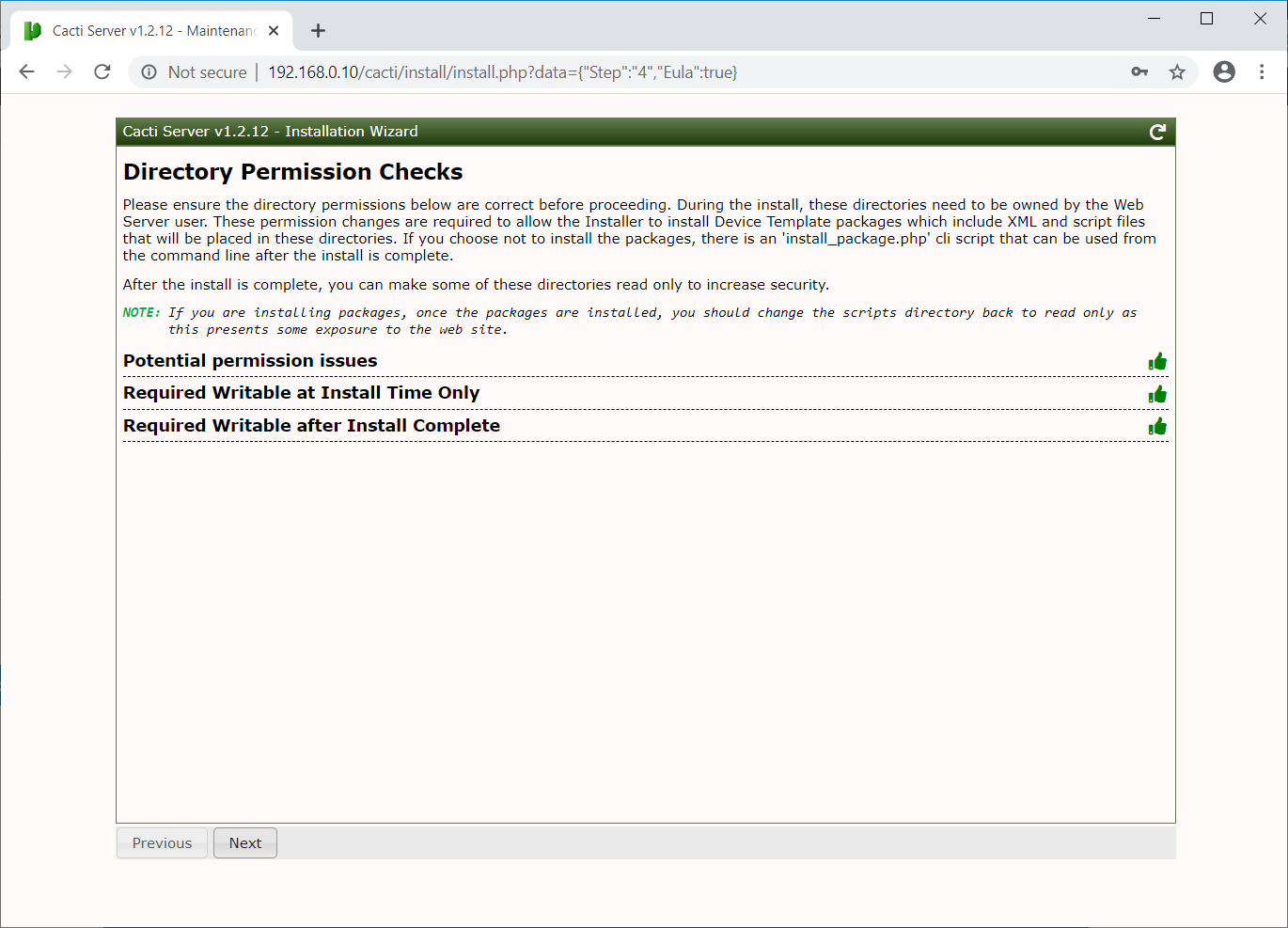
This page will show you the Cacti binary locations and their versions detail.
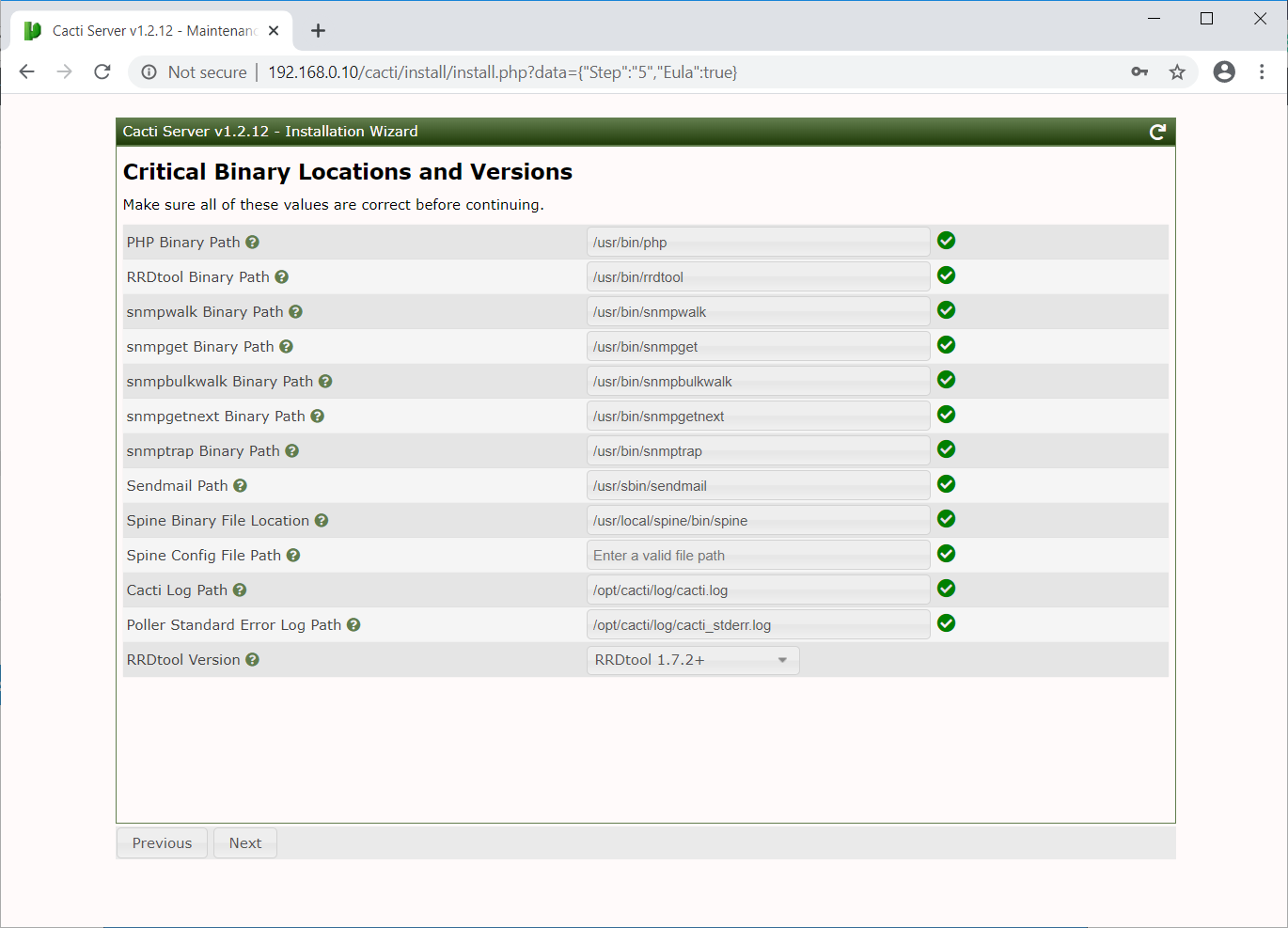
Take the time to read this statement and visit this link for more information and then click the Next.
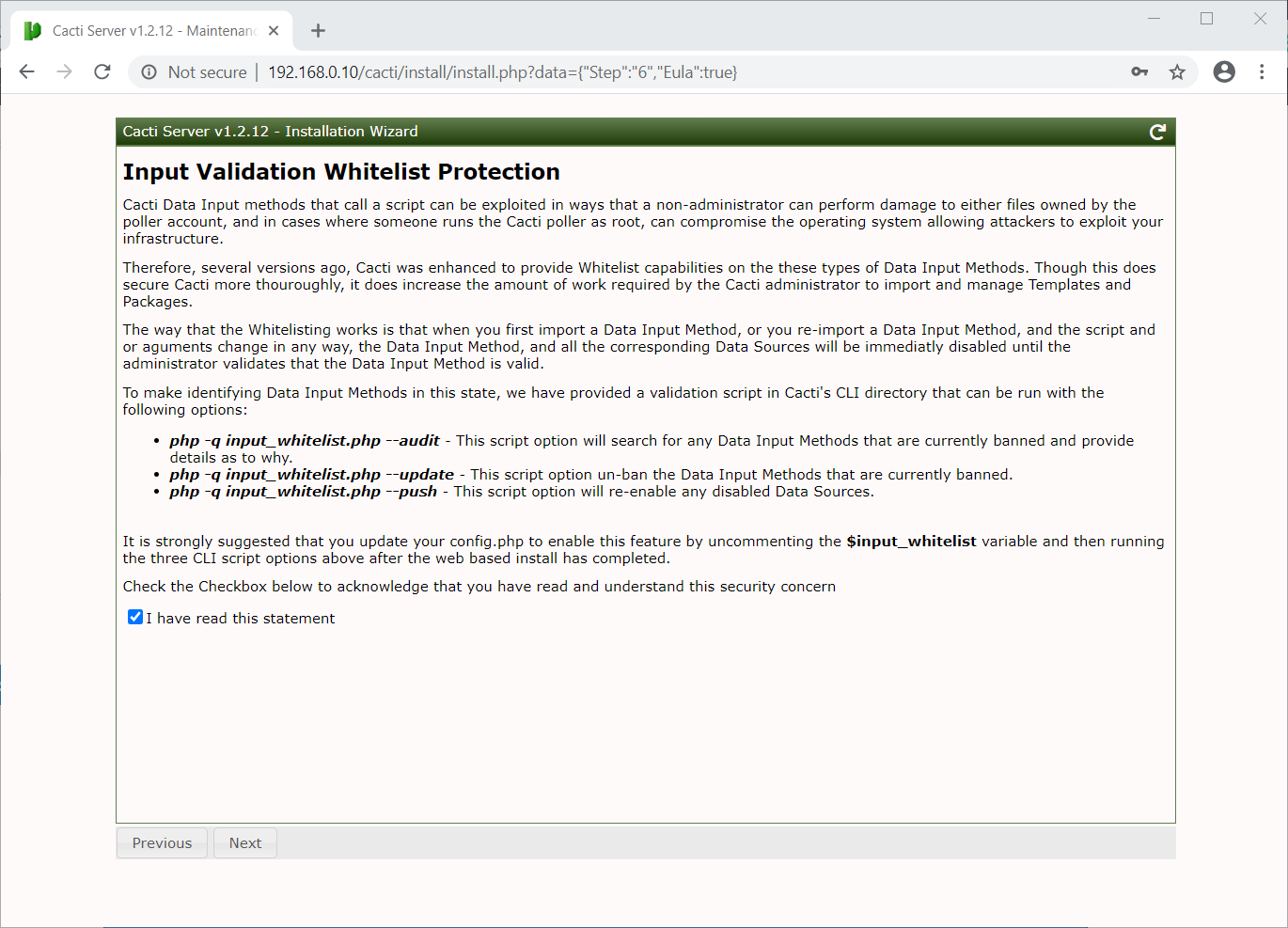
Click Next on the default profile page as we already set up cron to poll every five minutes.
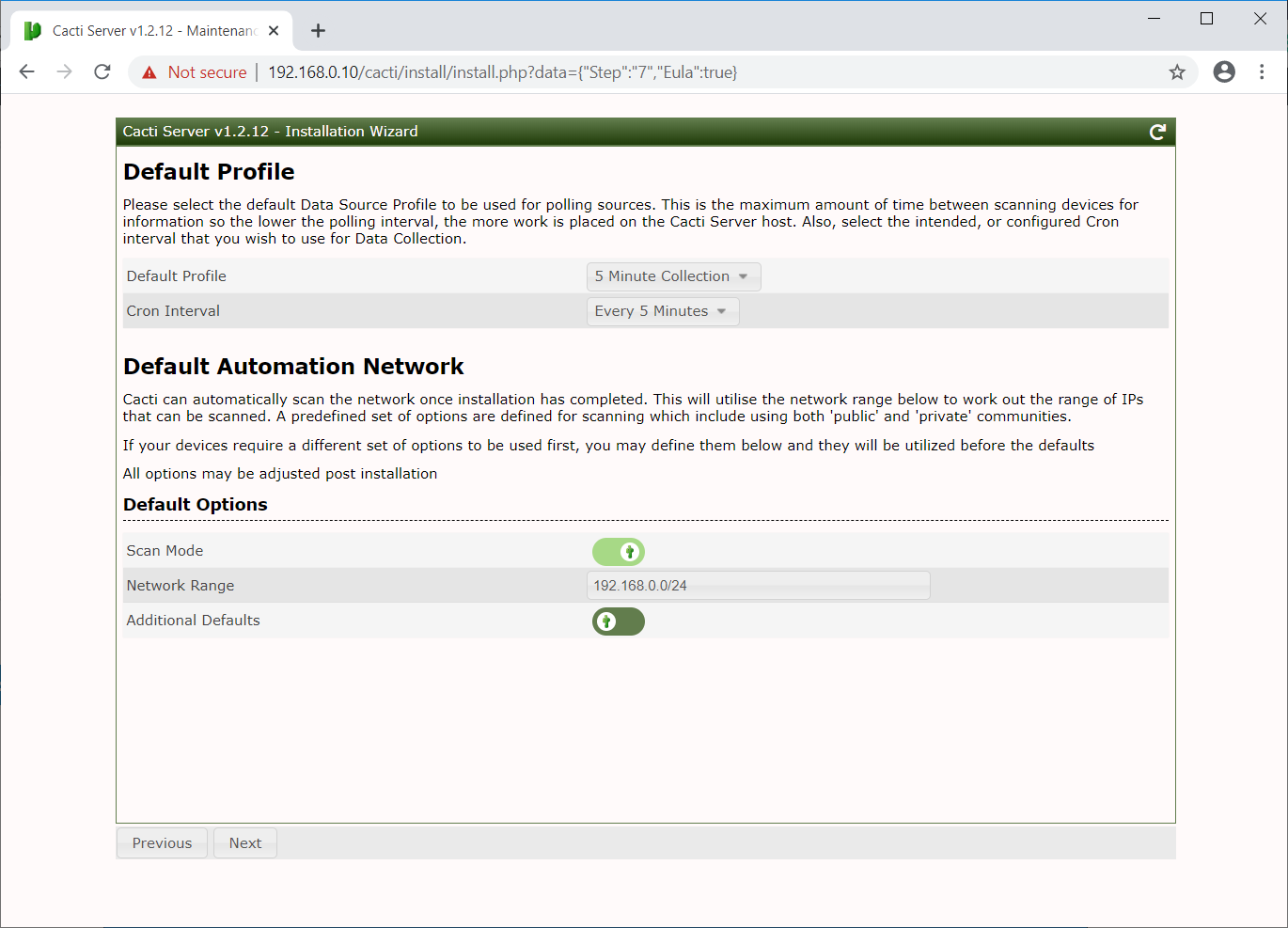
Select the device templates you wish to use and then click Finish to complete the installation of Cacti.
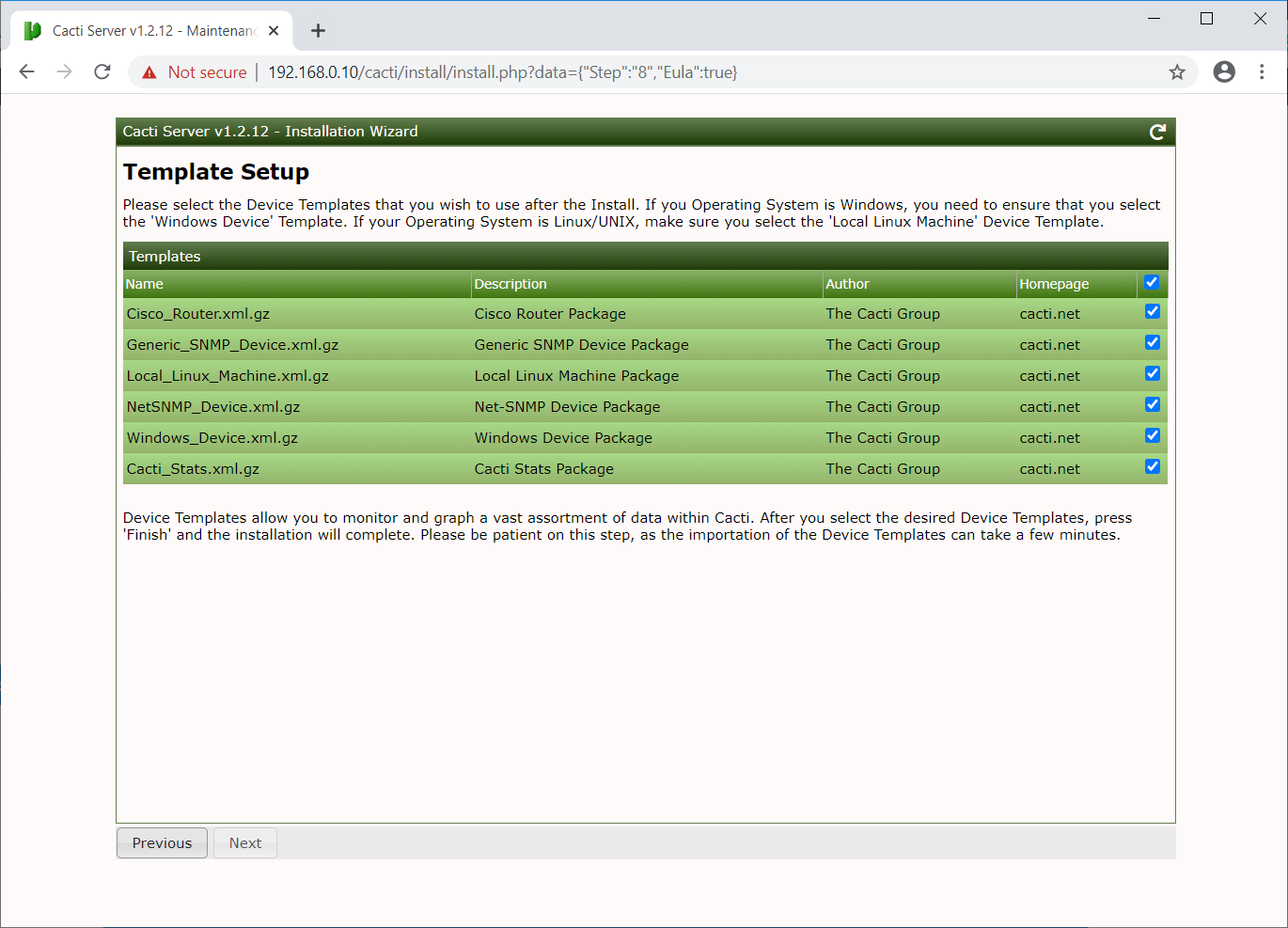
Click Next.
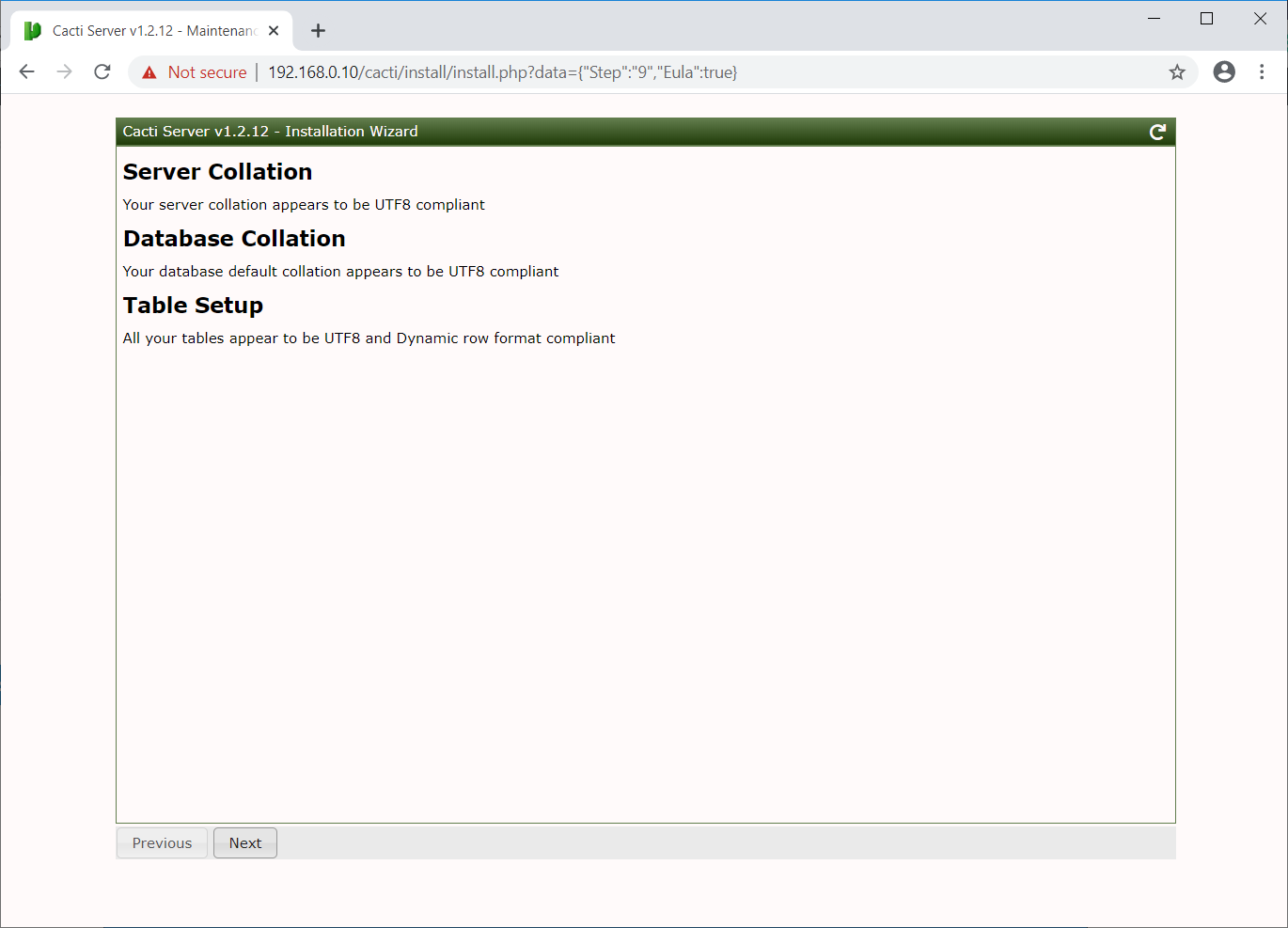
Select Confirm Installation and press Install to start the Cacti installation.
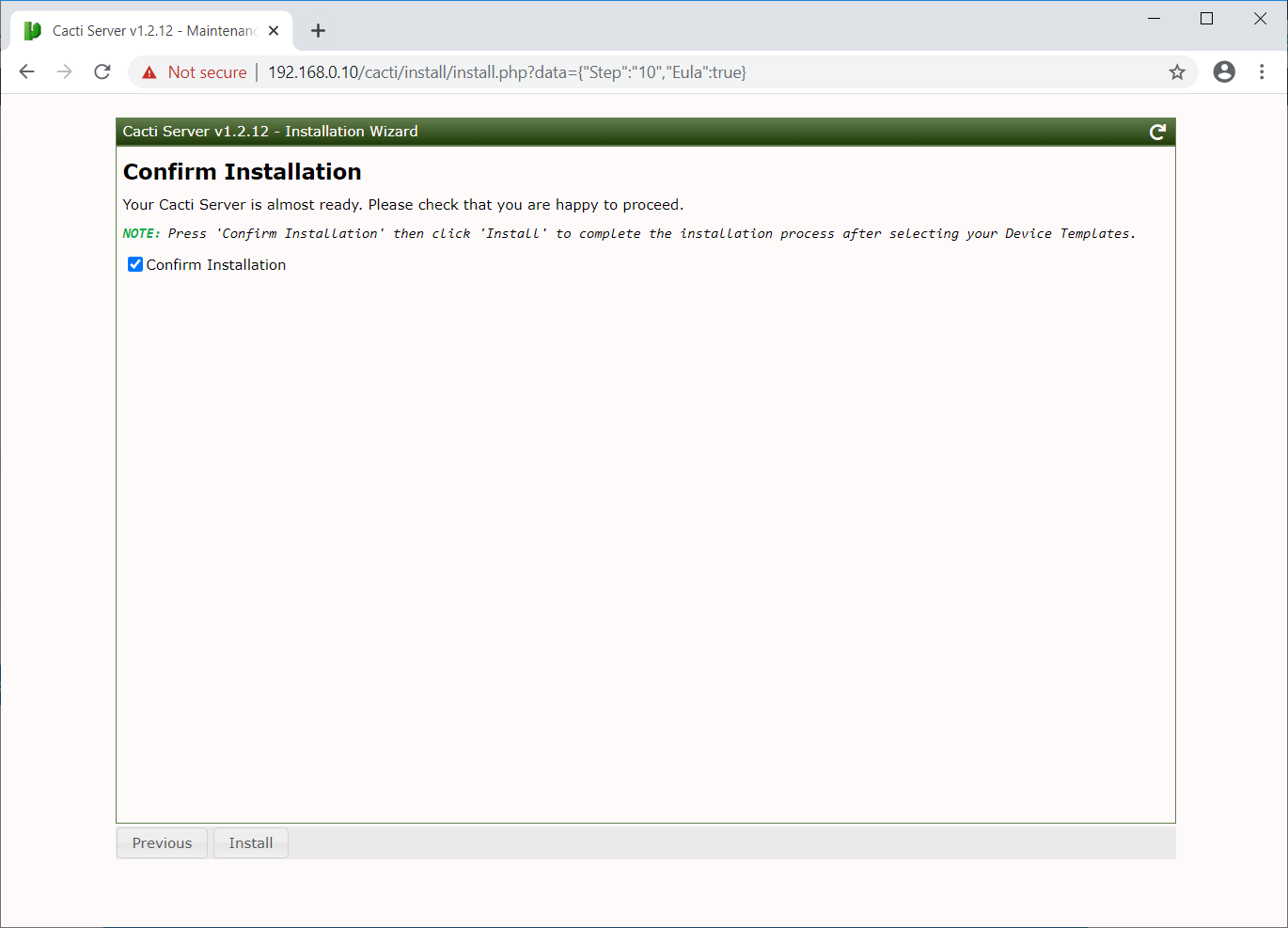
Wait for the Cacti installation to complete.
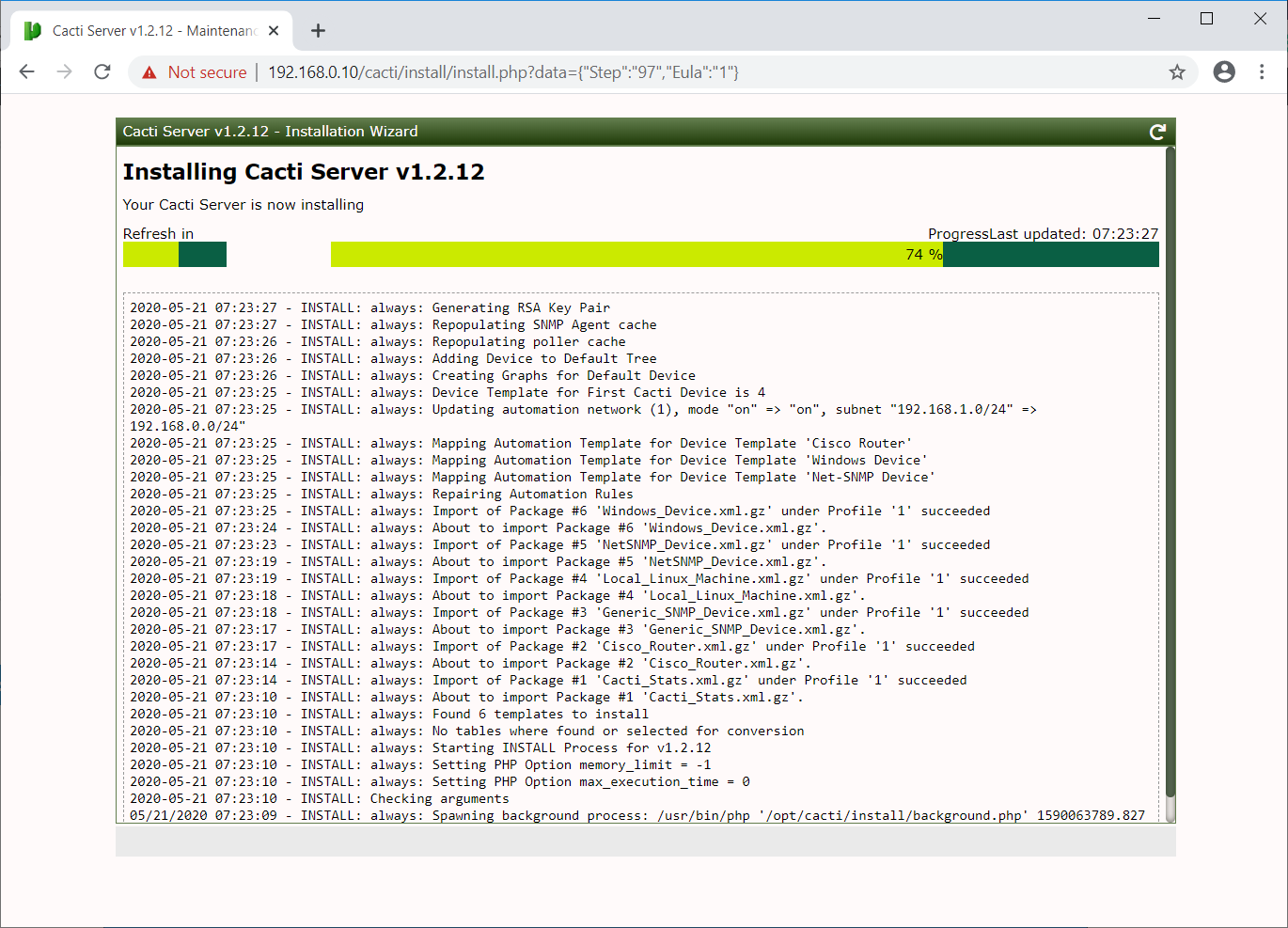
In a minute or two, the Cacti installation will complete.
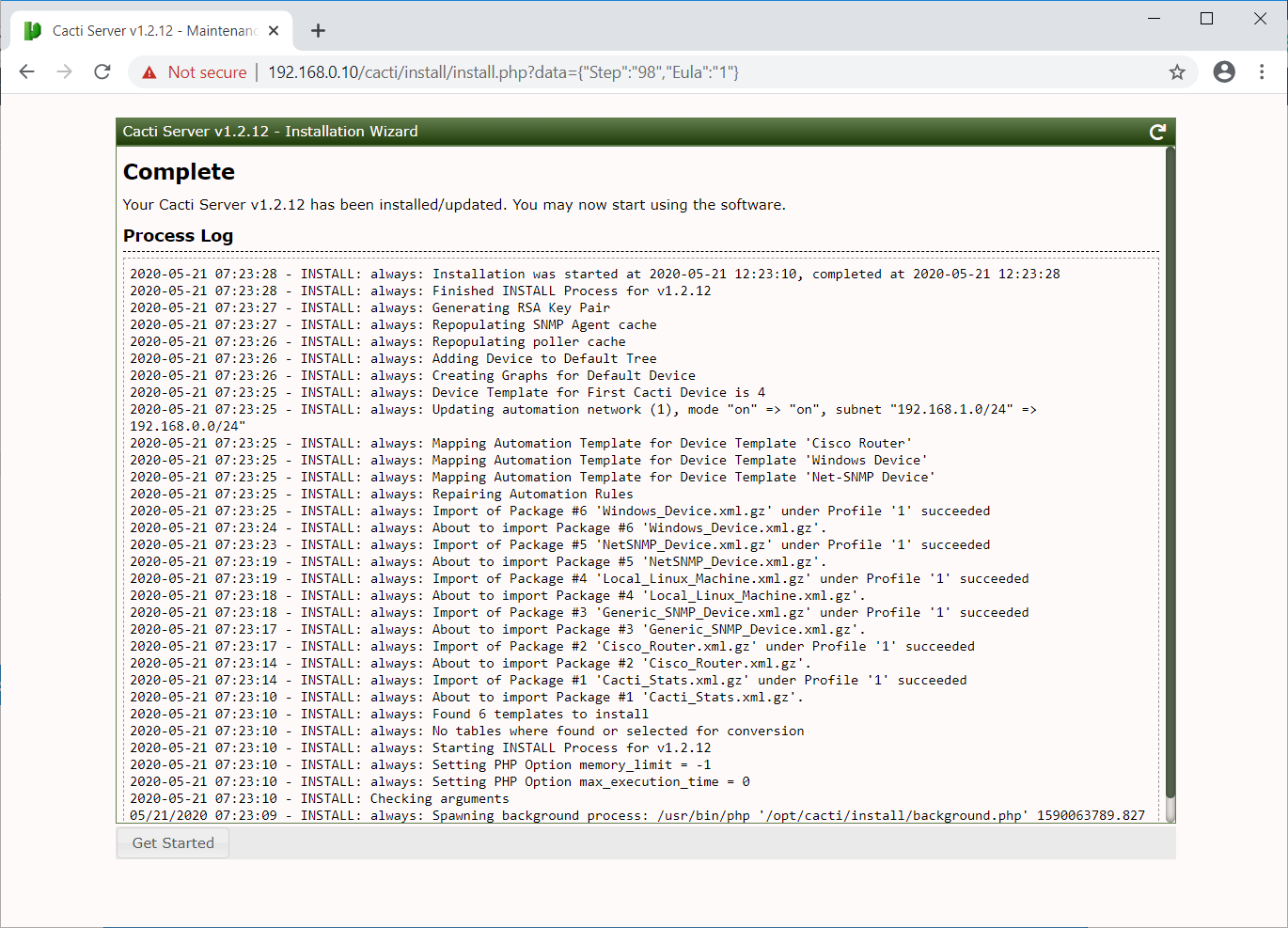
Clicking on the Get Started on the above page will take you directly to the Cacti dashboard.
Access Cacti Dashboard
Visit the following URL to begin using the Cacti tool.
Enter User Name and Password to login to Cacti.
Username: admin
Password: <YOUR_PASSWORD>
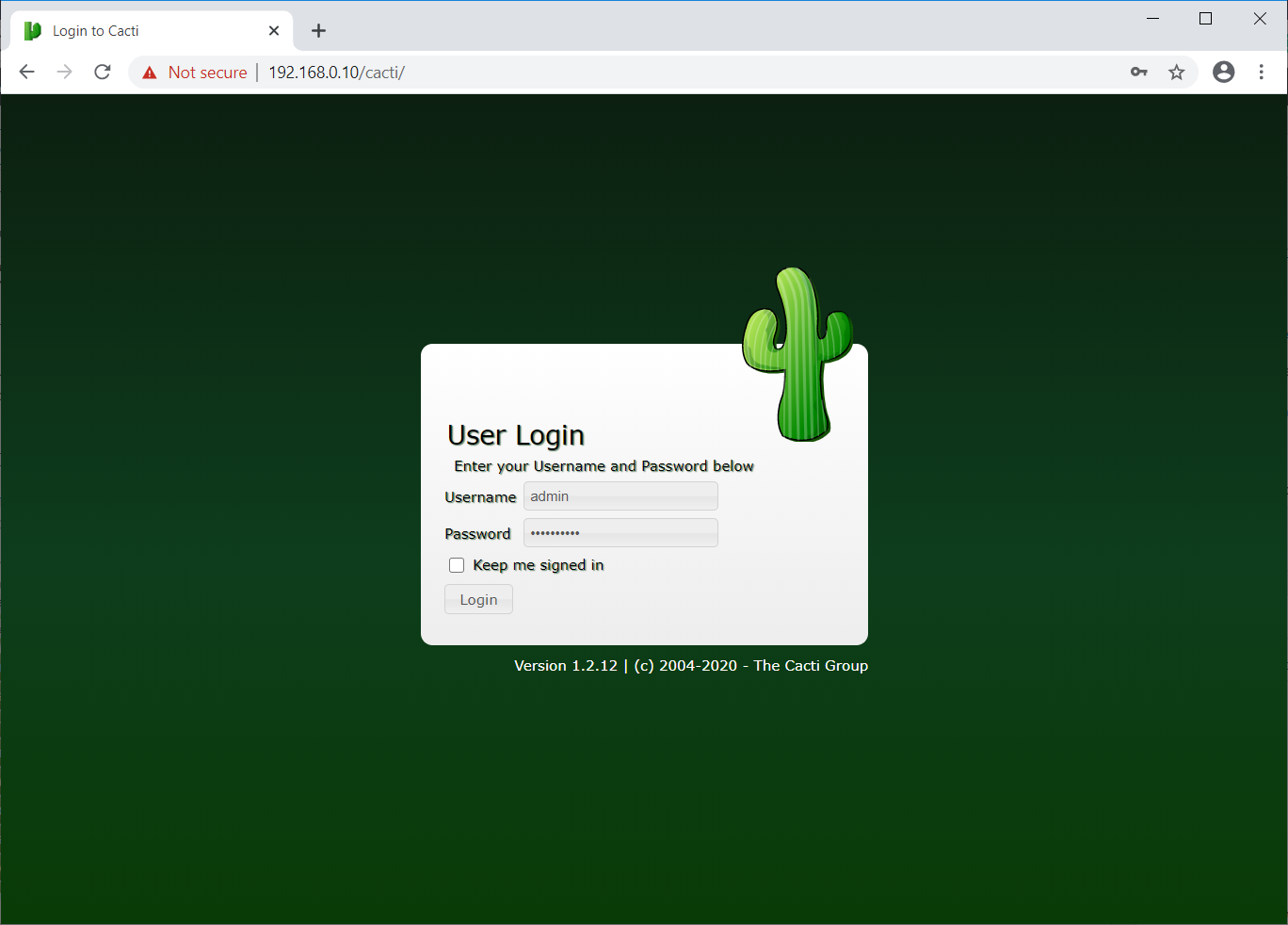
Cacti Dashboard:
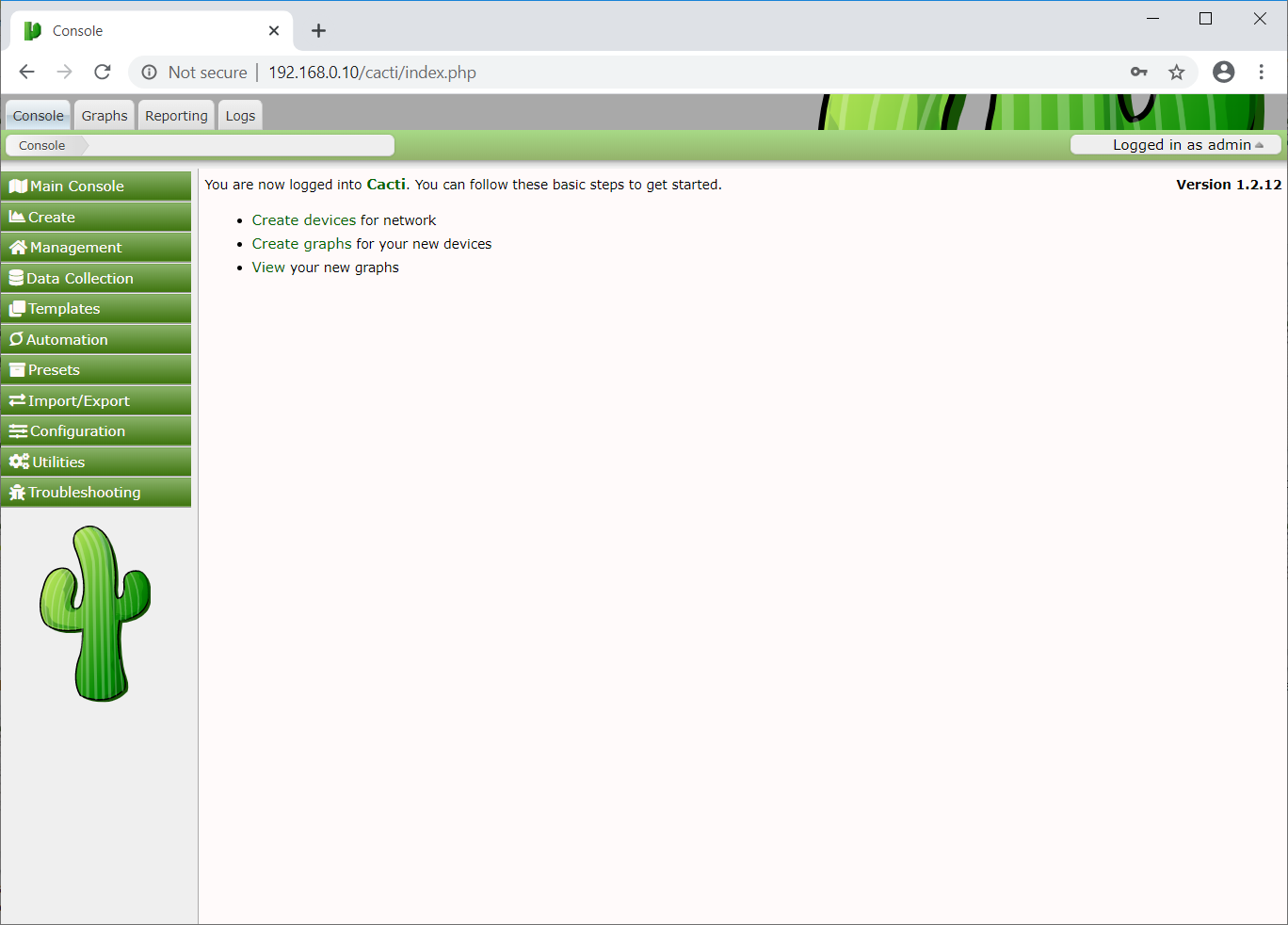
By default, the local machine (your Cacti server) will be added for monitoring in Cacti. You can Go to Graphs » Default Tree » Local Linux Machine to see the usage graph of the Cacti server.
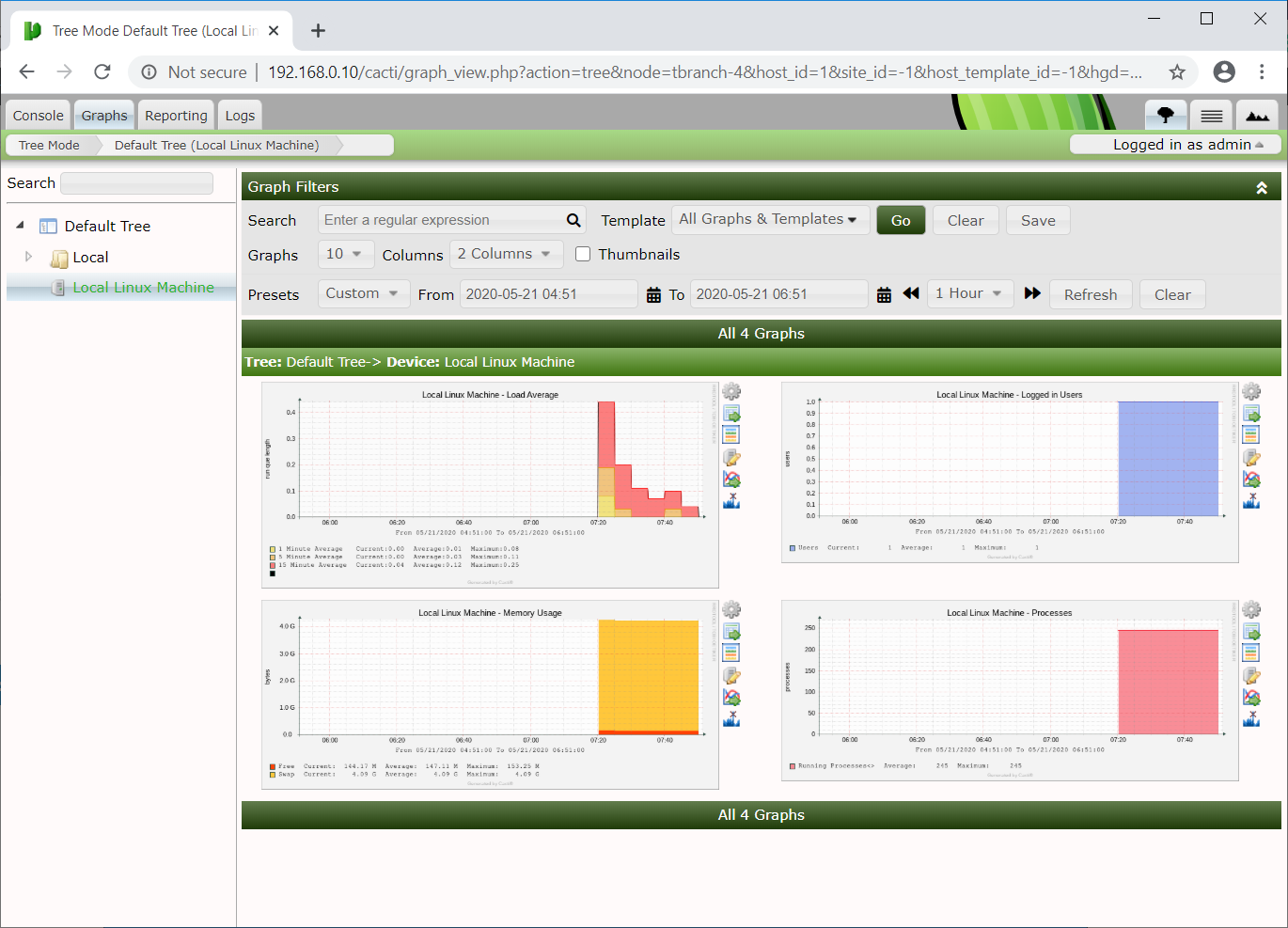
Monitor Remote Linux Machines
READ: How to monitor remote Linux machines with Cacti monitoring tool
Conclusion
That’s All. I hope you have learned how to install Cacti on Ubuntu 20.04. Now, you can check out how to monitor remote Linux machines with the Cacti monitoring tool. Please share your feedback in the comments section.


![How To Upgrade To Ubuntu 20.04 From Ubuntu 18.04 / Ubuntu 19.10 [Detailed Guide]](/post/how-to-upgrade-to-ubuntu-20-04/featured_hu8b7fad8701aaa8998bccee63d00edef2_86059_550x0_resize_q90_lanczos.jpg)





![How To Upgrade To Linux Mint 20 From Linux Mint 19 [Detailed Guide]](/post/how-to-upgrade-to-linux-mint-20/featured_hu3b6c6a25dd04b6406f79faf78c8c0be6_108894_550x0_resize_q90_lanczos.jpg)







